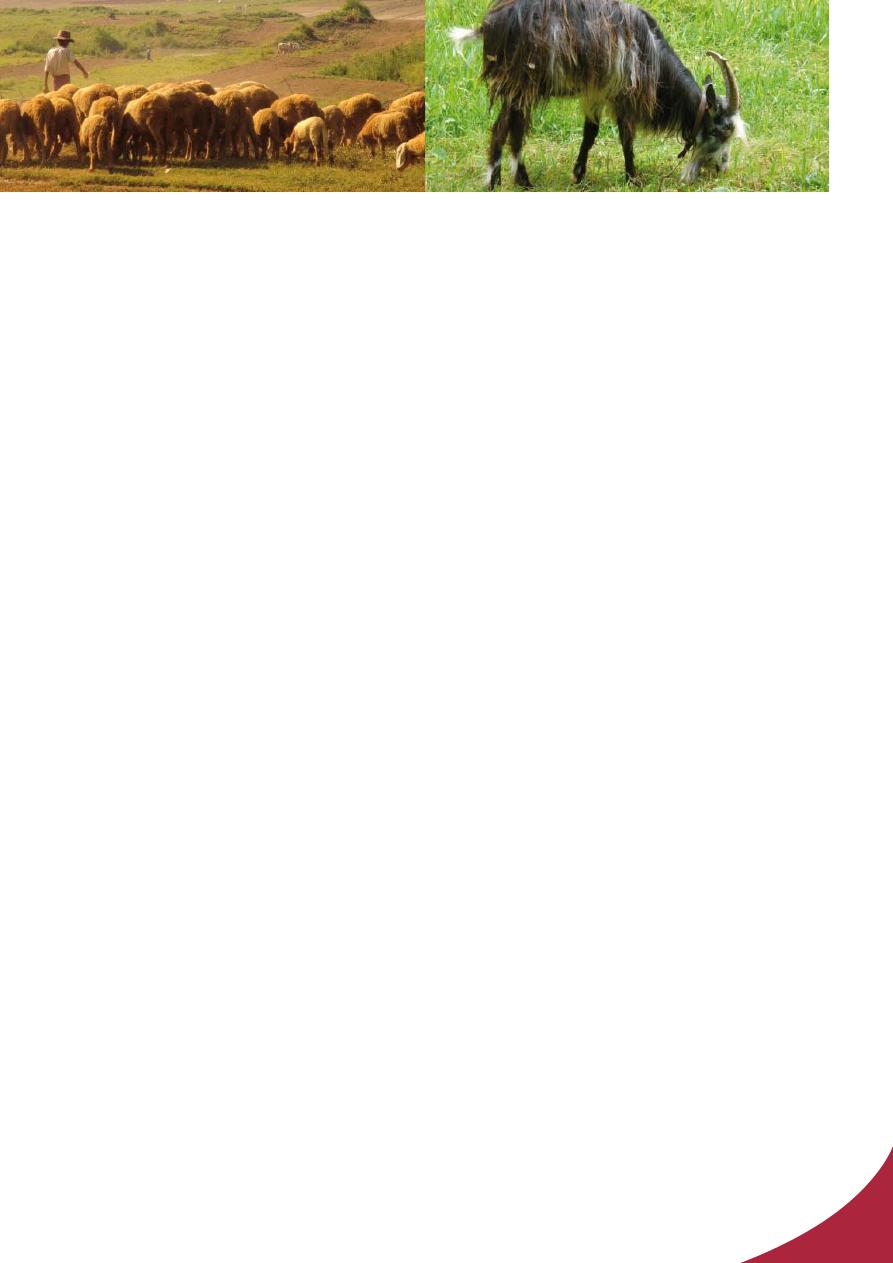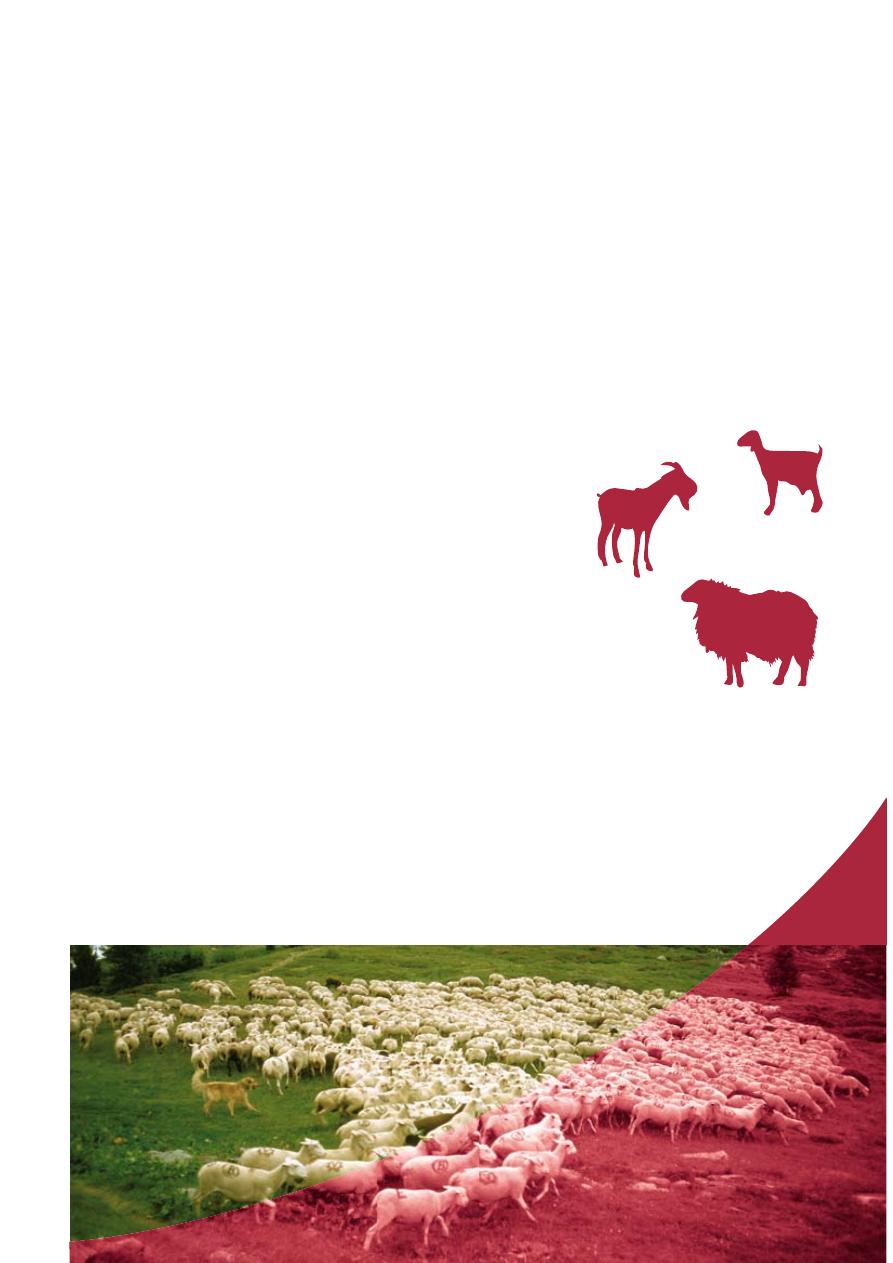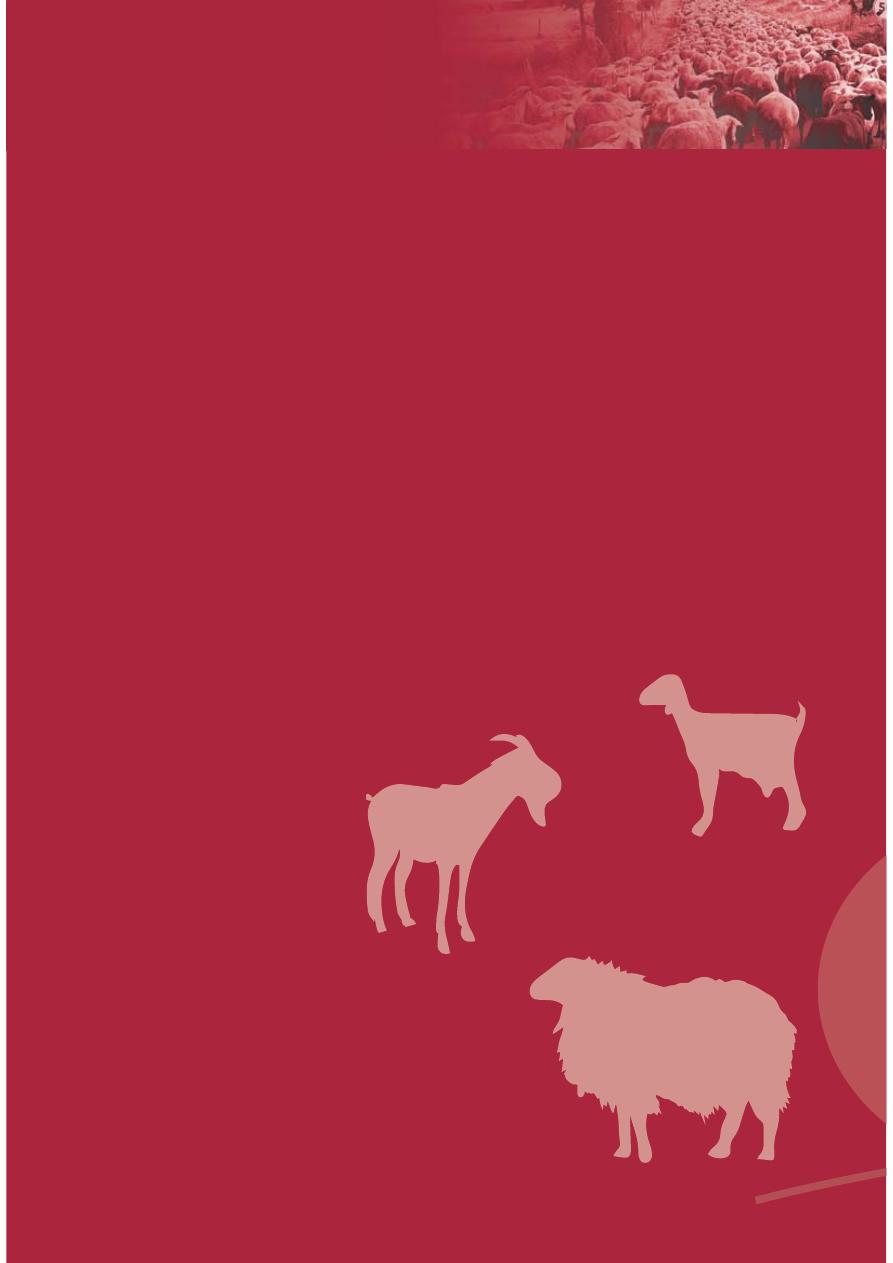
1
What is Peste des
petits ruminants (PPR)?
Peste des petits ruminants (PPR), also known as‘goat plague’, is a viral disease of
goats and sheep characterized by fever, sores in the mouth, diarrhea, pneumonia, and
sometimes death.
It is caused by a morbillivirus in the family of paramyxoviruses, that is related to rinderpest,
measles and canine distemper. Cattle and several wild ruminants have been infected
most often experimentally, but goats and sheep are the usual targets.
PPR is a disease listed in the OIE Terrestrial Animal Health Code, and countries are
obligated to report the disease to the OIE according to the criteria (OIE Terrestrial Animal
Health Code).
Peste des petits
ruminants (PPR)
General Disease Information Sheets

2
Where is the disease found?
The disease occurs in a band that spreads across
Africa between the equator and the Sahara,
through the Arabian Peninsula, the Middle East,
south-west Asia and India. China fi rst reported the
disease in 2007 and it spread into North Africa for
the fi rst time in Morocco in 2008.
How is the disease transmitted
and spread?
The virus is secreted in tears, nasal discharge,
secretions from coughing, and in the faeces
of infected animals. Therefore, close contact
between animals, especially through inhalation of
fi ne droplets that are released into the air when
affected animals cough and sneeze will spread
the disease. Water, feed troughs, and bedding
can also be contaminated with secretions and
become additional sources of infection, however
the virus does not survive for a long time outside
the body of a host animal.
Since animals excrete the virus before showing
signs of the disease, it can spread by movement
of infected animals.
General Disease Information Sheets

3
Peste des petits ruminants (PPR)
What are the clinical signs
of the disease?
Similar to Rinderpest in cattle, after an incubation
period of 3-6 days, there is a sudden onset of fever,
severe depression, loss of appetite, and clear nasal
discharge. The nasal discharge becomes thicker
and yellow, often becoming so profuse that it forms
a crust that blocks the nostrils causing respiratory
distress. The eyes may also become infected,
causing eyelids to mat together with discharge.
Tissues in the mouth can swell and ulcers form on
the lower gums, dental pad, hard palate, cheeks and
tongue. Severe diarrhea develops in some animals,
resulting in dehydration and weight loss. Pneumonia
is common in later stages. Pregnant animals may
abort. The prognosis of peste des petits ruminants is
poor and death can occur within fi ve to ten days of
the onset of fever.
Young animals are most severely affected, goats
more than sheep. In its most severe form (peracute)
animals are found dead. However, the disease can
be mild or unapparent and circulate in a country
causing little or no illness until susceptible goats are
exposed.
How is the disease diagnosed?
The disease may be suspected when there is sudden
onset of fever, nasal discharges, diarrhoea in sheep
and goats, while cattle are uninvolved. Because
the disease could resemble a great many common
diseases including Foot and Mouth Disease,
Bluetongue or Rinderpest, laboratory confi rmation
is important. Identifi cation of the virus or serological
testing is performed as outlined in the OIE Manual
of Diagnostic Tests and Vaccines for Terrestrial
Animals.

Peste des petits ruminants (PPR)
What is being done to prevent
or control the disease?
When the disease appears in a previously
unaffected area, the standard disease control
measures consisting of quarantine, movement
control, sanitary slaughter, and cleaning and
disinfection are applied. The virus is susceptible to
most disinfectants.
There are no medications available to treat the
disease, but supportive treatment may decrease
mortality.
A vaccine is used where the disease is established
and it provides good immunity. Because of the
close relationship of PPR virus to Rinderpest virus,
Rinderpest virus had been used as a vaccine, but
with the current efforts to eradicate Rinderpest
worldwide, it is no longer used.
What is the public health risk
associated with this disease?
Humans are not affected by the virus.
4

5
More Information?
General Disease Information Sheets
Ask our experts:
List of Reference Laboratories:
www.oie.int/en/our-scientifi c-
expertise/reference-laboratories/
List of Collaborating Centres:
www.oie.int/en/our-scientifi c-
expertise/collaborating-centres/
References:
1.
OIE Terrestrial Animal Health
Code:
standard-setting/terrestrial-code/
2.
OIE Manual of Diagnostic Tests
and Vaccines for Terrestrial
Animal:
terrestrial-manual/access-online/
3.
OIE Technical Disease Card:
4.
The Center for Food Security
and Public Health, Iowa State
University
www.cfsph.iastate.edu/
5.
Merck Veterinary Manual:
www.merckvetmanual.com/
mvm/index.jsp?cfi le=htm/bc/
toc_50000.htm
6.
Atlas of Transboundary
Animal Diseases Animales
Transfronterizas
P. Fernandez, W. White;
Ed.: 2011

6
• 12, rue de prony • 75017 paris france
• tel. 33 (0)1 44 15 18 88 - fax 33 (0)1 42 67 09 87
• www.oie.int • oie@oie.int
Cover photo:
© F.Carreras INRA.
Inside photos: © J.Crenn OIE, © N.Denormandie OIE,
© N.Hungerford OIE, © F.Carreras INRA,
© J.M.Bossenec INRA.
Key Facts
•
PPR was first reported in the Ivory Coast
in 1942, where it was called Kata (Pidgin
for Catarrh).
•
An outbreak in a zoo in United Arab
Emirates in 1987 affected gazelles, ibex,
and gemsbok, the first outbreak in species
other that sheep and goats.
•
In 2007 China reported PPR for the first
time.
•
In 2008 an outbreak in Morocco was the
first time the disease appeared in North
Africa.
